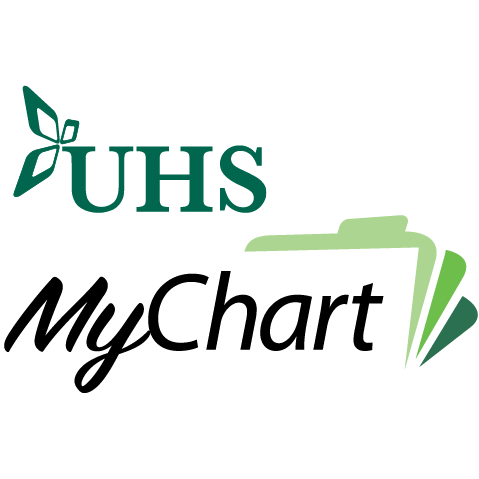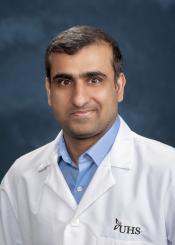
UHS achieves high-level stroke certification
UHS is pleased to announce that we are the first program in the Greater Binghamton and northern Pennsylvania region to earn The Joint Commission‘s Gold Seal of Approval® for Comprehensive Stroke Center Certification, the most advanced stroke certification offered by The Joint Commission.
Learn More >

Stroke Center
During a stroke, time lost is brain lost.
A hospital-based acute stroke-management system ensures that patients with confirmed or suspected stroke are immediately evaluated by a stroke team.
UHS Wilson Medical Center is a New York State Department of Health Primary Stroke Center, with specialists and staff committed to delivering unsurpassed stroke care using the latest diagnostic and therapeutic advancements. Wilson’s stroke team includes board-certified neurologists, neurosurgeons, and neuroradiologists who perform immediate studies such as diffuse and profuse MRI scans and administer acute thrombolytic therapy (clot-busting drugs). If surgery is required, UHS endovascular surgeons will surgically address the issue. Stroke patients recover in UHS’ Intensive Care Unit or the Neuroscience Step-Down Unit and are often subsequently discharged to the Sandiford Rehabilitation Center.
The UHS Stroke Clinic is the outpatient component of the UHS Stroke Center. The clinic provides follow-up stroke care to our stroke patients.
If you’re experiencing signs of a stroke, our New York stroke doctors offer the comprehensive care you need.
Stroke Quality Measures
Carotid Artery Stenosis-occurs when there is narrowing or a blockage in the artery in your neck. The artery in your neck supplies blood to the brain. A carotid endarterectomy (CEA) and/or carotid artery stenting (CAS) can be performed to remove the blockages in the arteries in your neck to reduce your risk of stroke or prevent a stroke from occurring again.
The following statistics show how frequently death or stroke occur after these procedures at United Health Services Hospitals in a given quarter:
Statistics
- Carotid Endarterectomy (CEA) and Carotid Stent (CAS) Complication Rate - 4th Quarter, 2024
Asymptomatic Disease
- 30-Day Complication (Death and Stroke) Rate at United Health Services Hospital:1.59%
- TJC Standard: ≤ 3%
Symptomatic Disease
- 30-Day Complication (Death and Stroke) Rate at United Health Services Hospital: 3.17%
- TJC Standard: ≤ 6%
Definitions
- Asymptomatic Disease: Patients do not show any signs or symptoms of a stroke.
- Symptomatic Disease: Patients have signs of a recent acute stroke, transient ischemic attack (TIA) which is a mini stroke, or temporary or permanent loss of vision in one or both eyes.
Stroke Services
At UHS, patients with suspected stroke are directly transferred for a computed tomography (CT) scan. The goal is to arrive quickly at a definitive diagnosis to establish and execute an immediate treatment plan.
- If the patient arrives by ambulance, EMS staff call ahead to alert the Emergency Department to prepare for immediate transport to Radiology for a CT.
- If the patient is already in the Emergency Department, they are transported directly to CT.
The American Heart Association sets a treatment standard of 60 minutes or less from when a patient arrives to the hospital. This graph represents the median treatment times seen at United Health Services for the past 8 years, showing consistently fast times.

The American Heart Association sets a provider assessment standard of 10 minutes or less from when a patient arrives to the hospital. This graph represents the median treatment times seen at United Health Services for the past 8 years, showing consistency in meeting this standard.

Ischemic Stroke
Up to 4 and a half (4.5) hours after an ischemic stroke (interruption of the blood supply to the brain):
- Thrombolytic (clot-busting) therapy – medication delivered intravenously to dissolve the clot
Up to 24 hours after an ischemic stroke (interruption of the blood supply to the brain):
- Thrombectomy -- the mechanical removal of a blood clot using a tiny catheter threaded into the blood vessels of the brain. This procedure is performed by an interventional radiologist in a special neuroradiology suite. A thrombectomy refers to a blood clot removed from its point of origin.
Hemorrhagic Stroke
- Aneurysm clipping – an intracranial (through the skull) procedure to place a small clip at the base of the aneurysm, a bulge in a blood vessel
- Aneurysm coiling – another procedure to address an aneurysm, a bulge in a blood vessel. A special type of very tiny wire is coiled into the blood vessel to seal off the aneurysm. This procedure is performed by a neurosurgeon or interventional radiologist.
- Embolization-a minimally invasive treatment that blocks or more blood vessels. This can be used to stop bleeding or to help redirect blood blow.
Cryptogenic Stroke
Following a cryptogenic stroke (stroke of unknown origin) or Transient Ischemic Attack (mini stroke):
- If a surgical solution is not an option, aspirin and plavix are often administered as blood-thinning agents, especially for patients who are outside the window for thrombolytics (within 4.5 hours of the last time the patient was known to be functioning normally).












